Mullins L.J. Management and organisational behaviour, Seventh edition
Подождите немного. Документ загружается.


In a study of assembly line and other factory work, Goldthorpe found that the tech-
nology was unfavourable for the creation of work groups.
38
However, he also found a
group of workers who, although alienated, were still satisfied. Membership of a mean-
ingful work group was not necessarily an important source of job satisfaction. The
workers, all married men, aged between 21 and 46, were not interested in maintaining
close relationships with fellow workers or supervisors. Their earnings were well in
excess of the average manual wage at the time – they were ‘affluent’ workers.
Goldthorpe recognised, however, that in other situations where there is the opportu-
nity for teamwork, the workers will have greater social expectations and the
membership of work groups may be very important to them.
Technology is clearly a major influence on the pattern of group operation and behav-
iour. The work organisation may limit the opportunities for social interaction and the
extent to which individuals are able to identify themselves as members of a cohesive
work group. This in turn can have possible adverse effects on attitudes to work and the
level of job satisfaction. In many assembly line production systems, for example, rela-
tionships between individual workers are determined by the nature of the task, the
extent to which individual jobs are specified, and the time cycle of operations.
ACAS draws attention to technological advances and how new technology enables
production to be tailored quickly to customer requirements, often on an individual basis.
Mass production techniques, where jobs are broken down into simple tasks, are not suitable for
the new customer focused manufacturing nor the expectations of an educated workforce.
Organisations need workers to be more flexible, to co-operate with other workers, supervisors
and managers throughout the organisation, to operate sophisticated technology and to be more
adaptable. In addition, the sheer complexity of operations in industry, commerce and the serv-
ices place them beyond the expertise and control of any one individual. In these circumstances
some form of teamwork becomes not justdesirable but essential.
39
You may recall from our discussion in Chapter 4 that the impact of information tech-
nology demands new patterns of work organisation, and affects the formation and
structure of groups. It will influence where and how people interact. Movement away
from large-scale centralised organisation to smaller working units can help create an
environment in which workers may relate more easily to each other. Improvements in
telecommunications mean, for example, that support staff need no longer be located
within the main production unit. On the other hand, modern methods of communica-
tion mean that individuals may work more on their own, from their own homes,
shared offices or hotels, or work more with machines than with other people.
40
Virtual teams
Increasingly common is the idea of a ‘virtual’ team where the primary interaction
among members is by some electronic information and communication process.
41
This
enables organisations to function away from traditional working hours and the physi-
cal availability of staff.
42
According to Hall, the virtual team is a potential future compromise between fully
fledged teams and well-managed groups.
I am watching the rise of this idea with interest but am sceptical that it will actually create a ‘third
way’. Real teams can only be forged in the crucible of personal interaction: videoconferences and
Net communications are still poor substitute for this. Of course, once a team has formed it can
use these media, as members will know each other well, but that’s not the important bit. It’s the
forming, norming and storming that make a team.
43
CHAPTER 13 THE NATURE OF WORK GROUPS AND TEAMS
535
Technology
and group
behaviour
Impact of
information
technology
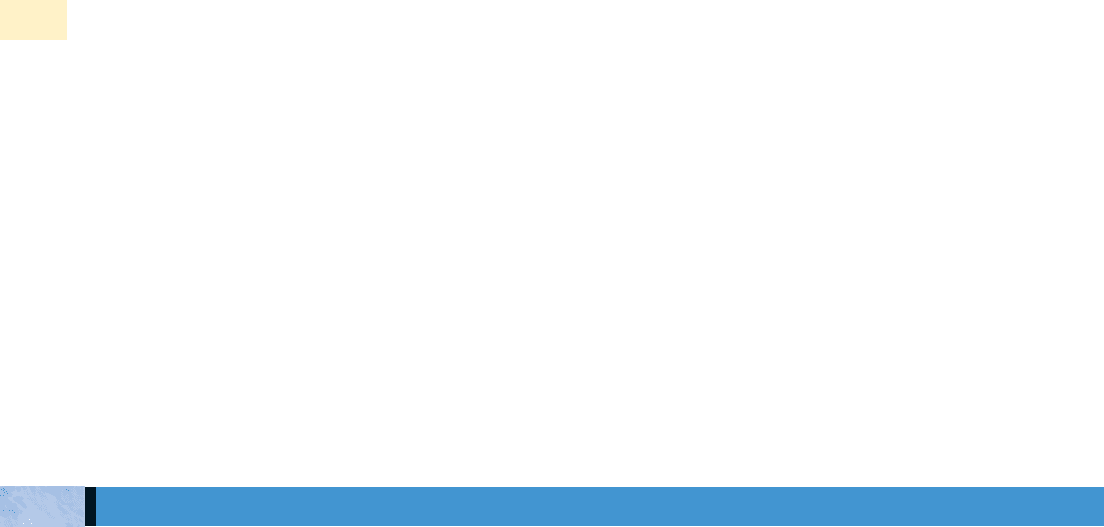
However, Parker highlights that remote working may also have an impact on the social
aspects of organisational working with an increasing feeling of isolation. ‘Remote team
working is not simply a matter of ensuring staff have access to a laptop and telephone line,
and assuming that they will be able to continue with their work. The management and
communication skills that this new working culture requires are also key to success.’
44
An account of remote team working at the Prudential is given in Management
in Action 13.2.
Symons considers one advantage of virtual teamworking using asynchronous media
is the clarity and richness of contributions when respondents are removed from the
urgency of immediate interaction, and this can be particularly relevant in cross-
cultural groups. However, as the leader cannot influence by their physical presence,
and as hierarchies fade on-line, managing dispersed teams requires a range of subtly
different leadership skills. It is important to develop mutual trust, a democratic
approach of shared control and decision-making, and to adopt the role and style of a
coach. ‘The leader has to establish and maintain “credit” with the group, as “position
power” has little or no currency in virtual working.’
45
In order that the organisation can achieve its goals and objectives, the work of individ-
ual members must be linked into coherent patterns of activities and relationships. This
is achieved through the ‘role structure’ of the organisation.
A ‘role’ is the expected pattern of behaviours associated with members occupy-
ing a particular position within the structure of the organisation. It also describes
how a person perceives their own situation. The concept of ‘role’ is important to the
functioning of groups and for an understanding of group processes and behaviour. It is
through role differentiation that the structure of the work group and relationships
among its members are established. The development of the group entails the identifi-
cation of distinct roles for each of its members. Some form of structure is necessary for
teamwork and co-operation. The concept of roles helps to clarify the structure and to
define the pattern of complex relationships within the group.
The formal organisational relationships (line, functional, staff or lateral) – discussed
later in Chapter 15 – can be seen as forms of role relationships. These individual
authority relationships determine the pattern of interaction with other roles.
The role, or roles, that the individual plays within the group is influenced by a com-
bination of:
■ situational factors, such as the requirements of the task, the style of leadership,
position in the communication network; and
■ personal factors such as values, attitudes, motivation, ability and personality.
The role that a person plays in one work group may be quite different from the role
that person plays in other work groups. However, everyone within a group is expected
to behave in a particular manner and to fulfil certain role expectations.
A person’s role-set
In addition to the role relationships with members of their own group – peers, superi-
ors, subordinates – the individual will have a number of role-related relationships with
outsiders – for example, members of other work groups, trade union officials, suppliers,
consumers. This is a person’s ‘role-set’. The role-set comprises the range of associations
or contacts with whom the individual has meaningful interactions in connection with
the performance of their role. (See Figure 13.6.)
536
PART 5 GROUPS AND TEAMWORK
Communication
and leadership
skills
ROLE RELATIONSHIPS
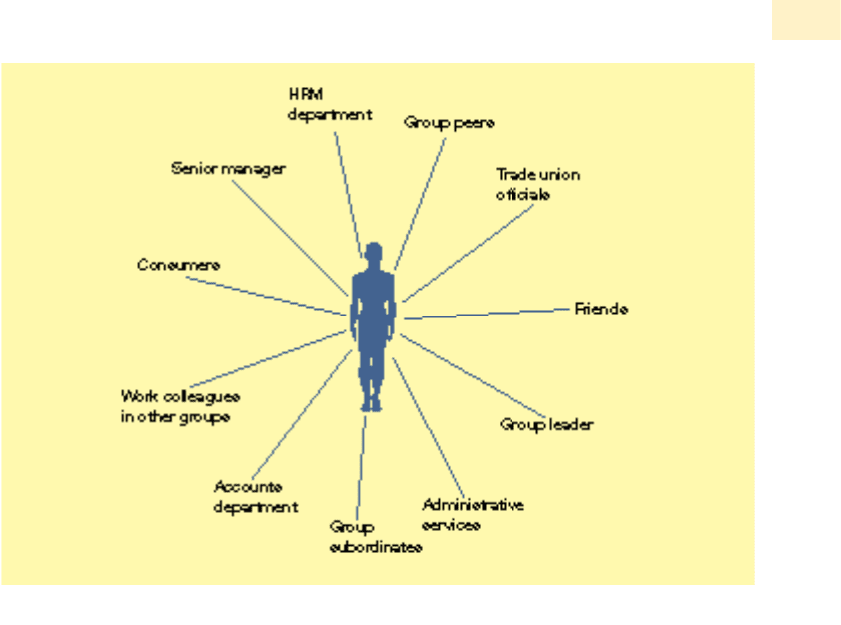
An important feature of role relationship is the concept of ‘role incongruence’. This
arises when a member of staff is perceived as having a high and responsible position in
one respect but a low standing in another respect. Difficulties with role incongruence
can arise from the nature of groupings and formal relationships within the structure of
the organisation. There are a number of work-related relationships, such as doctor and
nurse or senior manager and personal assistant, which can give rise to a potential
imbalance of authority and responsibility.
A classic account of role incongruence can be seen in Whyte’s study of the American
restaurant industry.
46
The chefs, who regarded themselves as of high status and were
generally recognised as such by the staff, resented being ‘told’ what to do by the wait-
ing staff who were generally regarded to be of lower status. As a result arguments broke
out, disrupting performance. The conflict of status was resolved by the introduction of
an ordering process by which the chefs received customers’ orders without the appear-
ance of taking instructions from the lower status waiting staff.
Difficulties with role incongruence can also arise in line-staff relationships: for
instance, a relatively junior member of the personnel department informing a senior
departmental manager that a certain proposed action is contrary to the policies of the
organisation. Another example with staff relationships is where a person establishes
him or herself in the role of ‘gatekeeper’ to the boss
47
– for instance, where a compara-
tively junior personal assistant passes on the manager’s instructions to one of the
manager’s more senior subordinates or where the personal assistant attempts to block a
more senior member of staff having access to the manager.
Problems over role incongruence can also lead to the possibility of role stress, dis-
cussed later in this chapter.
Many role expectations are prescribed formally and indicate what the person is
expected to do and their duties and obligations. Formal role prescriptions provide
guidelines for expected behaviours and may be more prevalent in a ‘mechanistic’
CHAPTER 13 THE NATURE OF WORK GROUPS AND TEAMS
537
Figure 13.6 Representation of a possible role-set in the work situation
Role
incongruence
Role
expectations
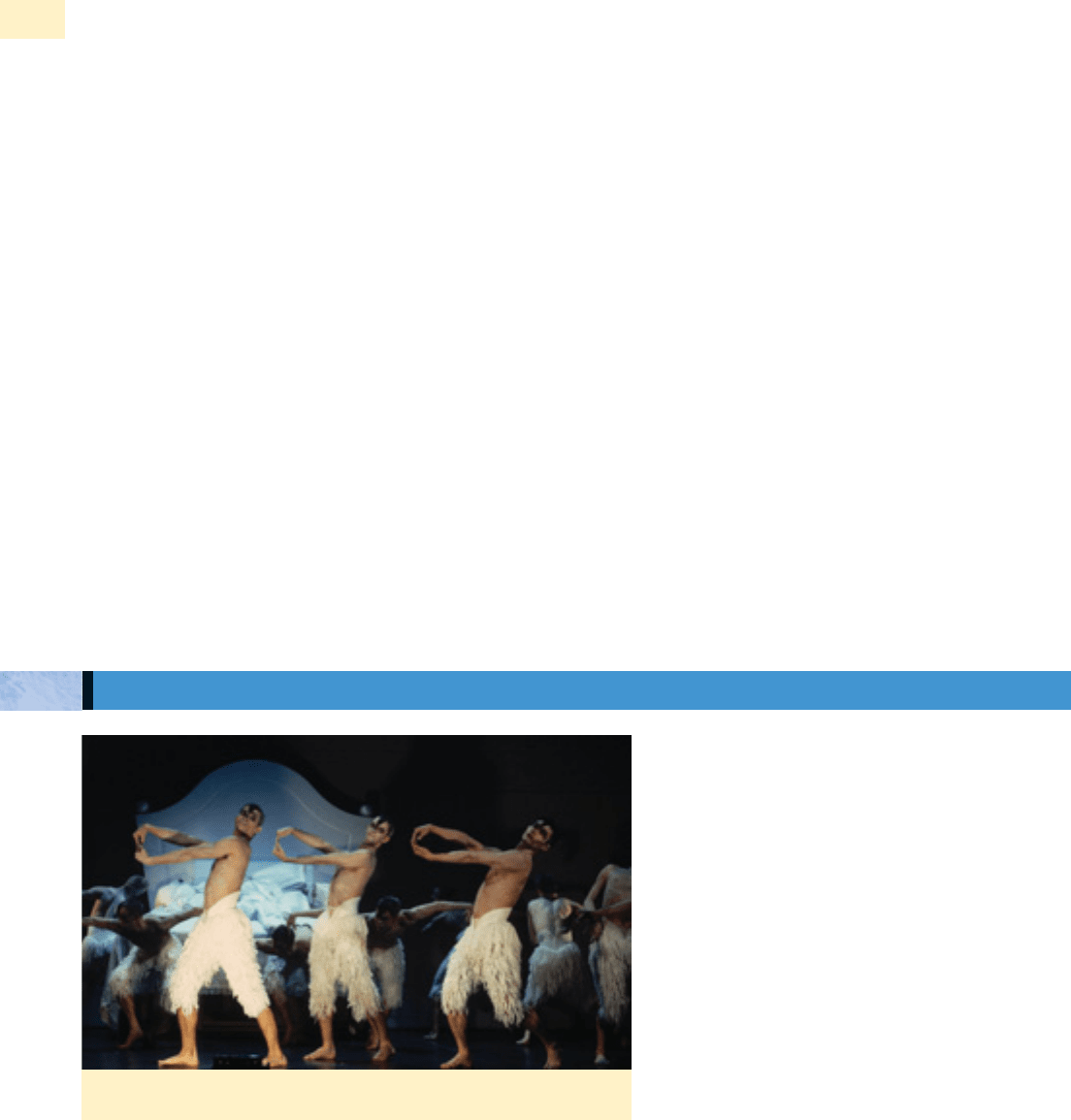
organisation. Examples are written contracts of employment, rules and regulations,
standards, policy decisions, job descriptions, or directives from superiors. Formal role
expectations may also be derived clearly from the nature of the task. They may, in part
at least, be defined legally, for example under the Health and Safety at Work Act, or as
with the obligations of a company secretary under the Companies Acts, or the respon-
sibilities of a district auditor under the Local Government Acts.
Not all role expectations are prescribed formally, however. There will be certain pat-
terns of behaviour which although not specified formally will nonetheless be expected
of members. These informal role expectations may be imposed by the group itself or at
least communicated to a person by other members of the group. Examples include gen-
eral conduct, mutual support to co-members, attitudes towards superiors, means of
communicating, dress and appearance. Members may not always be consciously aware
of these informal expectations yet they still serve as important determinants of behav-
iour. Under this heading could be included the concept of a psychological contract
which was discussed in Chapter 2. The psychological contract implies a variety of
expectations between the individual and the organisation. These expectations cover a
range of rights and privileges, duties and obligations which do not form part of a
formal agreement but still have an important influence on behaviour.
Some members may have the opportunity to determine their own role expectations,
where, for example, formal expectations are specified loosely or only in very general
terms. Opportunities for self-established roles are more likely in senior positions, but
also occur within certain professional, technical or scientific groups, or where there is a
demand for creativity or artistic flair. Such opportunities may be greater within an
‘organic’ organisation and will also be influenced by the style of leadership adopted –
for example, where a laissez-faire approach is adopted.
The concept of role focuses atten-
tion on aspects of behaviour
existing independently of an indi-
vidual’s personality. Patterns of
behaviour result from both the
role and the personality. Role con-
flict arises from inadequate or
inappropriate role definition and
needs to be distinguished from
personality clashes. These arise
from incompatibility between two
or more people as individuals even
though their roles may be defined
clearly and understood fully. In
practice, the manner in which a
person actually behaves may not
be consistent with their expected
pattern of behaviours. This incon-
sistency may be a result of role conflict. Role conflict as a generic term can include:
■ role incompatibility;
■ role ambiguity;
■ role overload; and
■ role underload.
538
PART 5 GROUPS AND TEAMWORK
ROLE CONFLICT
Matthew Bourne’s critically-acclaimed version of Swan Lake with male
dancers in the lead roles
Photo: Robbie Jack/Corbis

These are all problem areas associated with the creation of role expectations. (See
Figure 13.7.)
■ Role incompatibility arises when a person faces a situation in which simultaneous dif-
ferent or contradictory expectations create inconsistency. Compliance with one set
of expectations makes it difficult or impossible to comply with other expectations.
The two role expectations are in conflict. A typical example concerns the person ‘in
the middle’, such as the supervisor or section head, who faces opposing expectations
from workers and from management. Another example might be the situation of a
manager who believes in a relaxed, participative style of behaviour more in keeping
with a Theory Y approach, but whose superior believes in a Theory X approach and
expects the manager to adopt a more formal and directive style of behaviour.
■ Role ambiguity occurs when there is lack of clarity as to the precise requirements of
the role and the person is unsure what to do. The person’s own perception of their
role may differ from the expectations of others. This implies that insufficient infor-
mation is available for the adequate performance of the role. Role ambiguity may
result from a lack of formally prescribed expectations. It is likely to arise in large,
diverse groups or at times of constant change. Uncertainty often relates to such mat-
ters as the method of performing tasks, the extent of the person’s authority and
responsibility, standards of work, and the evaluation and appraisal of performance.
■ Role overload is when a person faces too many separate roles or too great a variety of
expectations. The person is unable to meet satisfactorily all expectations and some
CHAPTER 13 THE NATURE OF WORK GROUPS AND TEAMS
539
Figure 13.7 Role relationships and conflicts
(Source: Adapted from Miner, J. B., Management Theory, Macmillan (1971) p. 47.)
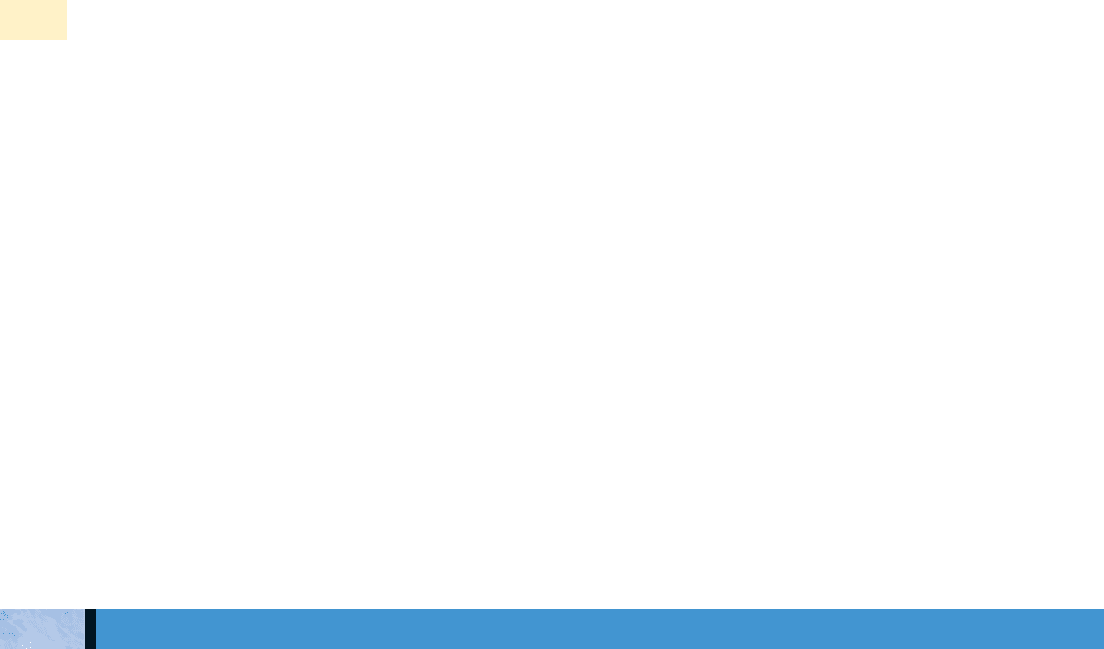
must be neglected in order to satisfy others. This leads to a conflict of priority. Some
writers distinguish between role overload and work overload. Role overload is seen
in terms of the total role-set, and implies that the person has too many separate
roles to handle. Where there are too many expectations of a single role – that is, a
problem of quantity – this is work overload.
48
■ Role underload can arise when the prescribed role expectations fall short of the
person’s own perception of their role. The person may feel their role is not demand-
ing enough and that they have the capacity to undertake a larger or more varied
role, or an increased number of roles. Role underload may arise, for example, when a
new member of staff is first appointed, or from the initial effects of delegation.
Problems of role conflict can often arise from the matrix form of organisation (which is
discussed in Chapter 15) and, for example, from the use of flexible project teams.
Where staff are assigned temporarily, and perhaps on a part-time basis, from other
groups this creates a two-way flow of authority and responsibility.
Unless role differentiations are defined clearly this can result in conflicting expecta-
tions from the manager of the person’s own functional grouping, and from the
manager of the project team (role incompatibility). It can also lead to uncertainty
about the exact requirements of the part the person is expected to play as a member of
the project team (role ambiguity). The combinations of expectations from both man-
agers may also result in role overload.
Role conflict can result in role stress. An example of role stress can also be seen in
Whyte’s study of the American restaurant industry (referred to above under role incon-
gruence). A number of waiting staff found the job very stressful and they cried often.
One reason for this was the constant conflict between the demands of the customer to
be served quickly and pressure from the chefs who were unable to produce the food in
time. The waiting staff were caught between two incompatible expectations and were
pulled both ways.
A survey conducted among subscribers of Management Today reported Britain’s man-
agers feeling burdened with increasing levels of pressure and disillusioned by
diminishing control over their working lives. Many managers claimed the organisation’s
culture contributes to their stress and call for a change in working practices. Under con-
siderable stress themselves managers admit to transmitting problems to their staff.
49
Although a certain amount of stress may arguably be seen as a good thing, and
especially at managerial level helps to bring out a high level of performance, it is also
potentially very harmful. Stress is a source of tension, frustration and dissatisfaction. It
can lead to difficulties in communication and interpersonal relationships and can
affect morale, effectiveness at work and health.
50
Role stress, then, is a major influence on job satisfaction and work perform-
ance. It will be discussed further in Chapter 18.
Reducing role conflict and role stress
Greater attention is now given to health problems that are classified as stress-related.
51
There is increasing evidence concerning illnesses, such as cardiovascular diseases, and
social problems – for example, marriage breakdowns – which can have stress as a factor.
Decreasing efficiency resulting from work stress is also extremely costly to organisa-
tions. It is important, therefore, that managers make every effort to minimise the
causes of stress.
52
540
PART 5 GROUPS AND TEAMWORK
Role conflict
and matrix
organisation
ROLE STRESS

There are a number of ways in which management might attempt to avoid or reduce
role conflict, and the possibilities of role stress.
■ Increase specification and clarity of prescribed role expectations, for example
through written statements on objectives and policy, use of manuals and set pro-
cedures, introduction of appropriate rules, and detailed job descriptions. However,
such measures may be resented by staff. They may restrict the opportunity for inde-
pendent action and personal development, giving rise to even more role conflict.
■ Improved recruitment and selection and the careful matching of abilities, motiva-
tion, interests and personalities to the demands of a particular role.
■ Attention to induction and socialisation programmes, job training and retraining,
staff development and career progression plans.
■ Medical examinations and health screening to give early indications of potential
stress-related problems.
■ The creation of new roles or assimilation of existing roles. The reallocation or
restructuring of tasks and responsibilities. The clarification of priorities, and the
elimination or downgrading of minor roles.
■ Giving advance notice and explanation of what is likely to happen, for example of
an expected, additional heavy workload which must be completed urgently. Where
possible and appropriate provide an opportunity for practice or experience.
■ Attention to factors which may help improve group structure and group cohesive-
ness, and help overcome inter-group conflict.
■ Change in management system and leadership style – for example, the move
towards System 4 management (discussed in Chapter 7).
■ Review of organisation structure, information flow and communication networks,
for example members of staff being answerable to more than one superior.
Bureaucratic interference and poor delegation are all common causes of work stress,
whereas greater autonomy and the introduction of autonomous work groups can
result in a marked reduction in stress.
53
Even if there is an absence of role conflict and role stress, a person’s actual behaviour
may still be inconsistent with their expected pattern of behaviours. Miner gives three
reasons that may account for this disparity.
54
■ The person does not perceive their job in the way the role prescriptions specify. This
is a form of role ambiguity but may arise not because the role prescriptions them-
selves are unclear, but because the person misunderstands or distorts them.
■ Motivation is lacking, and the person does not want to behave in the way prescribed.
■ The person does not have the capabilities – knowledge, mental ability or physical
skills – required to behave in the way the role prescriptions specify.
Organisations apply a number of both positive and negative sanctions as inducements
for members to contribute and behave in accordance with their prescribed roles.
Typical examples are: an increase in salary or wages; promotion; a sideways or down-
wards move in the organisation structure; the threat of dismissal.
There are also a number of less direct sanctions which may be adopted. These
include: the size of office or work area; the allocation of unpopular tasks; giving oppor-
tunities for paid overtime work; level of supervision or empowerment; the amount of
information given or the extent of consultation; granting or withholding privileges.
Role sanctions may also be applied through the operation of the informal organisa-
tion. Members of the group may impose their own sanctions and discipline individuals
who contravene the norms of the group or expected standards of behaviour.
CHAPTER 13 THE NATURE OF WORK GROUPS AND TEAMS
541
Other
influences on
behaviour
Application of
sanctions
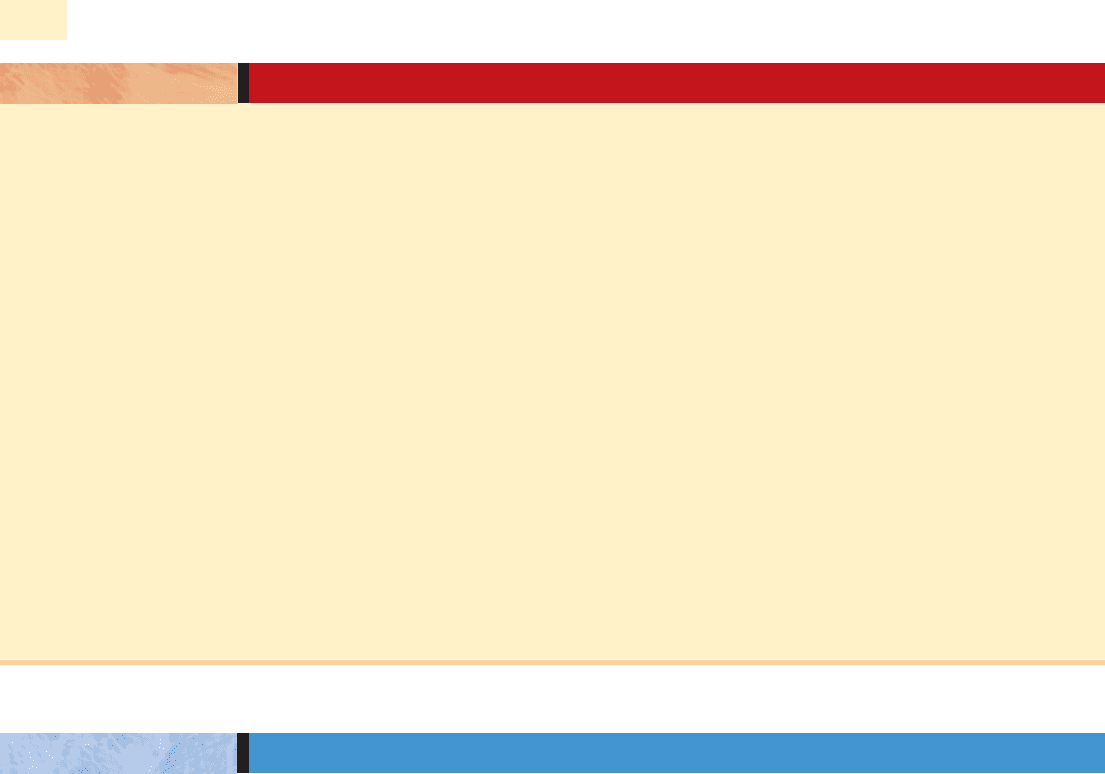
■ Work is a group-based activity, and groups and teams are a major feature of human
behaviour and work organisation. Members must co-operate with one another for work
to be carried out. Harmonious working relationships and good teamwork help make
for a high level of staff morale and organisational performance. There is a tendency for
the terms ‘groups’ and teams’ to be used interchangeably. Whereas all teams are
groups, it does not necessarily follow that all groups are teams. Groups develop their
own pattern of values and norms of behaviour.
■ Groups are formed as a consequence of the pattern of organisation structure and
arrangements for the division of work. There are two main types of groups at work,
formal and informal. Formal groups are deliberately planned and created by manage-
ment as part of the organisation structure, and to achieve specific organisational
objectives. Informal groups are based on personal relationships and develop irrespec-
tive of the formal structure. Informal groups serve to satisfy members’ psychological
and social needs. Groups are formed, therefore, for a number of reasons relating to
both work performance and social processes.
■ Individuals will form into groups or teams, both formal and informal, for a
number of different reasons relating to both work performance and social processes.
The manager’s main concern is that members co-operate with one another. Factors
which affect group cohesiveness can be considered under the broad headings of: mem-
bership; work environment; organisational; and group development and maturity.
Membership of strong and cohesive groups can be a rewarding experience for the indi-
vidual and have beneficial effects for the organisation.
542
PART 5 GROUPS AND TEAMWORK
CRITICAL REFLECTIONS
‘I recognise that groups are an integral part of the work organisation but I do value my individual-
ity and own identity, and enjoy the right of self expression.’
‘That shouldn’t be a problem. After all the skill of management is to make full use of people’s
individuality for the mutual benefit of the group as a whole.’
‘Oh, I see – I think.’
What are your own views?
While teamwork may be about empowering workers, devolving responsibility, and reversing
repressive workplace control structures, it can also mean intensifying attention. Instead of an
individual exercising a degree of influence over their own work, they can now influence the work
of others in their team through suggestion, demonstration, and exhortation. Life in teams can be
stressful as individuals are subject to intense peer pressure to conform to group norms.
Wilson, F. M. Organizational Behaviour: A Critical Introduction, Oxford University Press (1999), p. 93.
How would you attempt to overcome or reduce the potentially stressful features of
teamwork?
‘Personal self-interest and opportunism are natural features of human behaviour and will always
take preference over the demands and best interests of the group.’
Debate.
SYNOPSIS
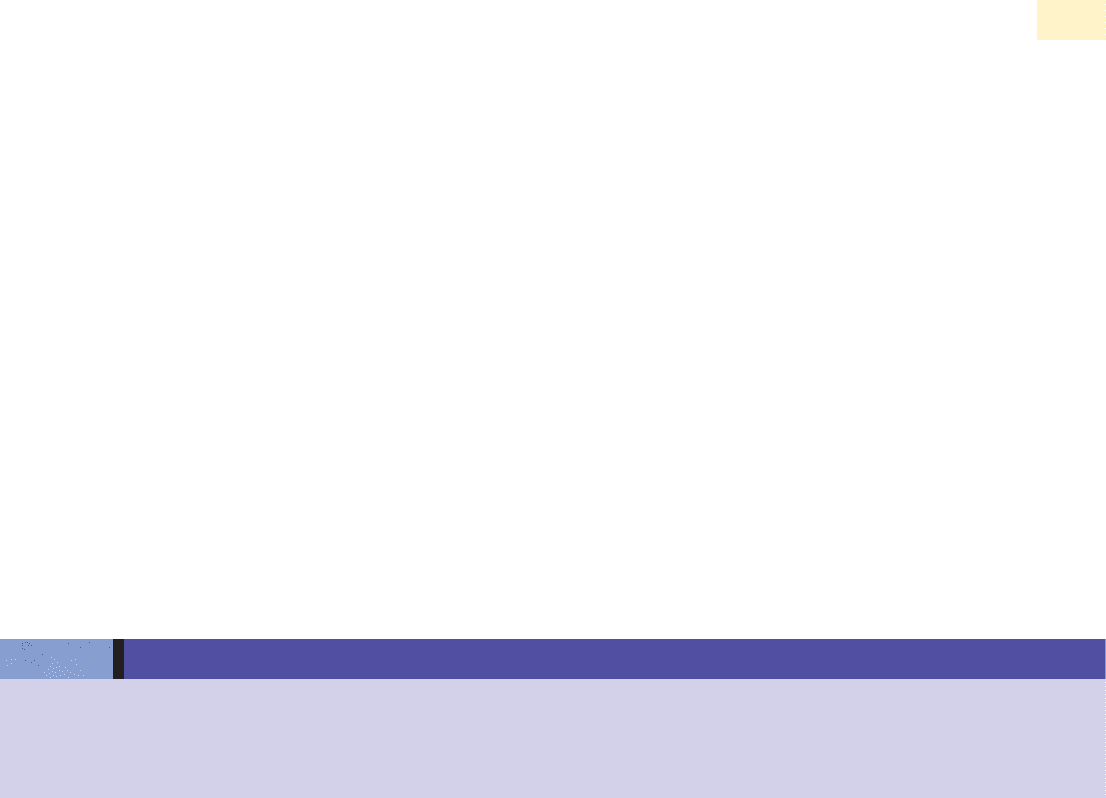
■ There are, however, potential disadvantages of strong, cohesive groups and the
manager should attempt to prevent unconstructive inter-group conflict. On the other
hand, inter-group rivalry may be deliberately encouraged as a means of building
stronger within-group cohesiveness. Individuals make a contribution to the work
of the organisation in different ways. The effective management of work groups
requires an understanding of the psychological and social influences on behaviour
within organisations.
■ The characteristics of an effective work group are not always easy to isolate. The
underlying feature is a spirit of co-operation in which members work well together as a
united team, and with harmonious and supportive relationships. The nature of tech-
nology and the work flow system of the organisation is a major influence on the
operation of groups. The impact of information technology is likely to lead to new pat-
terns of work organisation, and affect the formation and structure of groups.
■ The concept of ‘role’ is important to the functioning of groups, and for an under-
standing of group processes and behaviour. It is through role differentiation that the
structure of work groups and relationships among members is established. Role expec-
tations may be established formally, they may be informal or they may be
self-established. Inadequate or inappropriate role definition can result in role conflict
including: role incompatibility, role ambiguity, role overload and role underload. Role
conflict can result in role stress. It is important that the manager makes every effort to
minimise role conflict and the causes of role stress.
CHAPTER 13 THE NATURE OF WORK GROUPS AND TEAMS
543
MANAGEMENT IN ACTION 13.1
Teamwork in a small company
Eddie Brennan
Introduction
This is the story of a small (40-person) Dublin-based multi-
media company, which we started four years ago. The main
activity is producing computer courseware for a large
International Company. Four of us had started the company.
Our mix of backgrounds is: a journalist/marketeer; a computer
systems integrator; a former company director/business con-
sultant; and an organizational consultant in banking.
The staff numbers rose from one to ten over about four
months. They were young and newly qualified, just out of third
level college. This was their first job. The mix of skills were
systems integrator, graphic designers and technical writers.
Difficulties
Some difficulties became apparent fairly quickly. Because the
quality control function was then run by the client, the normal
tension between developers and quality control was compli-
cated by trying to keep good relations with the client. The
day-to-day frustrations were exacerbated by the delays in the
throughput in the client’s work, which had a knock-on effect
on our work.
Because of the inexperience of our young staff problems
were being referred back to the Managing Director who then
had to discuss the matter with the client. This was time con-
suming and staff morale was starting to suffer. In discussions
with the client’s top management it was evident that
■ they were very happy with our work, and
■ they were not aware that they had problems in their own
work flow.
Our cash flow was affected by the delays as payment was
made on completion of specific pieces of work.
A full review with the client’s top Management and Financial
Controller was held on the whole work programme. They were
anxious that we take on more work. When the difficulties were
discussed the client agreed to pay a set amount each month,
to review work progress every six months and that part of the
quality control function was to be passed to us.
This immediately improved the whole relationship and
helped us to concentrate on developing a longer-term strat-
egy for the company.
Developing a strategy
When we were developing our strategy two objectives were
decided early on:
■ we needed to develop the business so that we were not
totally dependent on the one client, while still keeping
them happy;

544
PART 5 GROUPS AND TEAMWORK
■ we wanted to maintain and to develop an innovative and
creative atmosphere in the company.
To achieve the first objective we set a target of reducing the
dependence on our one client by 20% per year over the next
three years. We needed to build up staff numbers to allow
enough ‘slack’ in the contract work so that there was the
capacity to take on new work. Fortunately the client was
encouraging us to take on more staff and promised that they
could give us as much work as we could handle. We
increased our staff to 15, to 20, and then to 25 over a period
of 15 months.
To achieve the second objective depended on making
early progress on the first. The routine production of course-
ware was now becoming that – just routine. Our young staff
were becoming bored. To retain staff in a computer/technical
environment people must feel that they are continuing to
learn new processes and are being kept up to date with new
technology. If they are to remain interested/satisfied/fulfilled it
is important that they are challenged to think.
From the work in the early days a large library of graphics
and computer routines had been built up and it was possible
to incorporate these in subsequent work thus shortening the
development time. This increase in productivity on the ‘boring
stuff’ freed up staff to get at the exciting new bits.
We decided to develop autonomous teams who would be
responsible for specific areas. Having read several discus-
sions on team working over the years in QWL the profile of
our small company seemed an ideal environment to imple-
ment this structure. We started a series of three-hour
sessions with all of the staff. These covered subjects such as
organizational development; management theory; stress
management; financial management. Workshops were held
on team building; customer relations; and interpersonal rela-
tionships. In all six afternoon/evening meetings were held,
followed usually by a drink in the pub across the road.
What was apparent very early on was the interest and will-
ingness of the staff to understand and to support the two
strategic goals we had set ourselves. They quickly appreci-
ated that their futures were dependent on how successful the
company was in achieving them and were particularly tuned
into the financial needs. (This was due to the fact that the
financial controller made it very clear that if the money was
not there then the new equipment was not bought – unless
they preferred not to be paid that month!)
The management was surprised by the maturity, responsi-
bility and interest that the staff took (and still take) in the
health and development of the company once they were
given the chance.
What is today’s position?
The company is still running and now has a 60/40 split on the
client dependency. Staff turnover has been very low by com-
puter industry standards roughly 10% per year. Seven or eight
of the original 10 are still working there and continue to grow
with the company. What’s worth noting is that the staff that do
leave maintain a very good relationship with the company and
many have been responsible for sending us new customers.
The salaries tend to be approximately 15% lower than
industry norms, but staff feel it’s ‘a fun place to work’ and that
they have opportunities to learn new skills. They stay
because of this. We have even had applications from people
who have heard from friends about working conditions and
want to come to work for us.
Discipline and work throughput has not been a great prob-
lem. The team structure keeps it under control largely by peer
pressure, if someone on the team is not pulling their weight
then their workmates let them know very quickly. Not every-
one has felt comfortable with the ‘flat’ structure of the
company and when it became apparent that they did not fit in
they left. Two left for this reason.
The company earned the ISO 9000 standard within 18
months of introducing the team structure. This gave a big
boost to the staff’s morale. They now have an independent
organization giving them feedback on their systems. The dis-
cipline imposed by ISO 9000 has proved very useful internally
– the actual mechanics of ISO 9000 have given a very clear
framework for introducing new staff to the processes.
Clear project plans are developed with definite work
objectives agreed with all staff. Teams are organized around
specific projects like putting together a group in the film
industry. Each project requires a different mix of skills so
people regroup to the different projects requirements.
Discussions take place on individual goals and achievements
albeit in an informal way. Within this project plan work time
and time keeping is very flexible. Nine to five are the normal
hours but these vary for any individual at any specific
time/work. It is not unusual to find groups of people working
late into the night. This demands flexible security arrange-
ments as well of course.
There is a high level of tolerance of individuals. One anec-
dote will help illustrate this. An individual who is particularly
skilled in detecting hardware/system problems finds it very
difficult to keep regular hours, yet seems to have an uncanny
ability to appear when needed, day or night. His success rate
in solving problems is so well appreciated, that everyone from
the MD down will not have a word said against him!
What is important to staff is to feel that they are progress-
ing in their skills. As new recruits come straight from
third-level colleges they bring with them up-to-date thinking
and pass this to the ‘old boys’. The ‘old boys’ in turn train
them in the internal skills and processes. This develops the
trust needed in the team structure.
An unexpected development has been the formation of the
‘social teams’. These have formed independently of the project
teams and are more permanent groups. They arose around
such activities as the annual ‘PIX’ awards. These PIX awards
are internal company competitions organized to acknowledge
individuals and teams for: e.g. The Most Creative Film; The
Most Innovative Graphics; or The Most Original Use of Diverse
Technology. Football competitions and other social activities
are now organized around these teams.
What are the weaknesses?
Cash flow is still a problem. It is difficult to balance the enthu-
siasm to innovate with the commercial reality of ‘only doing
what the client is willing to pay for’.
Management in Action 13.1 continued
